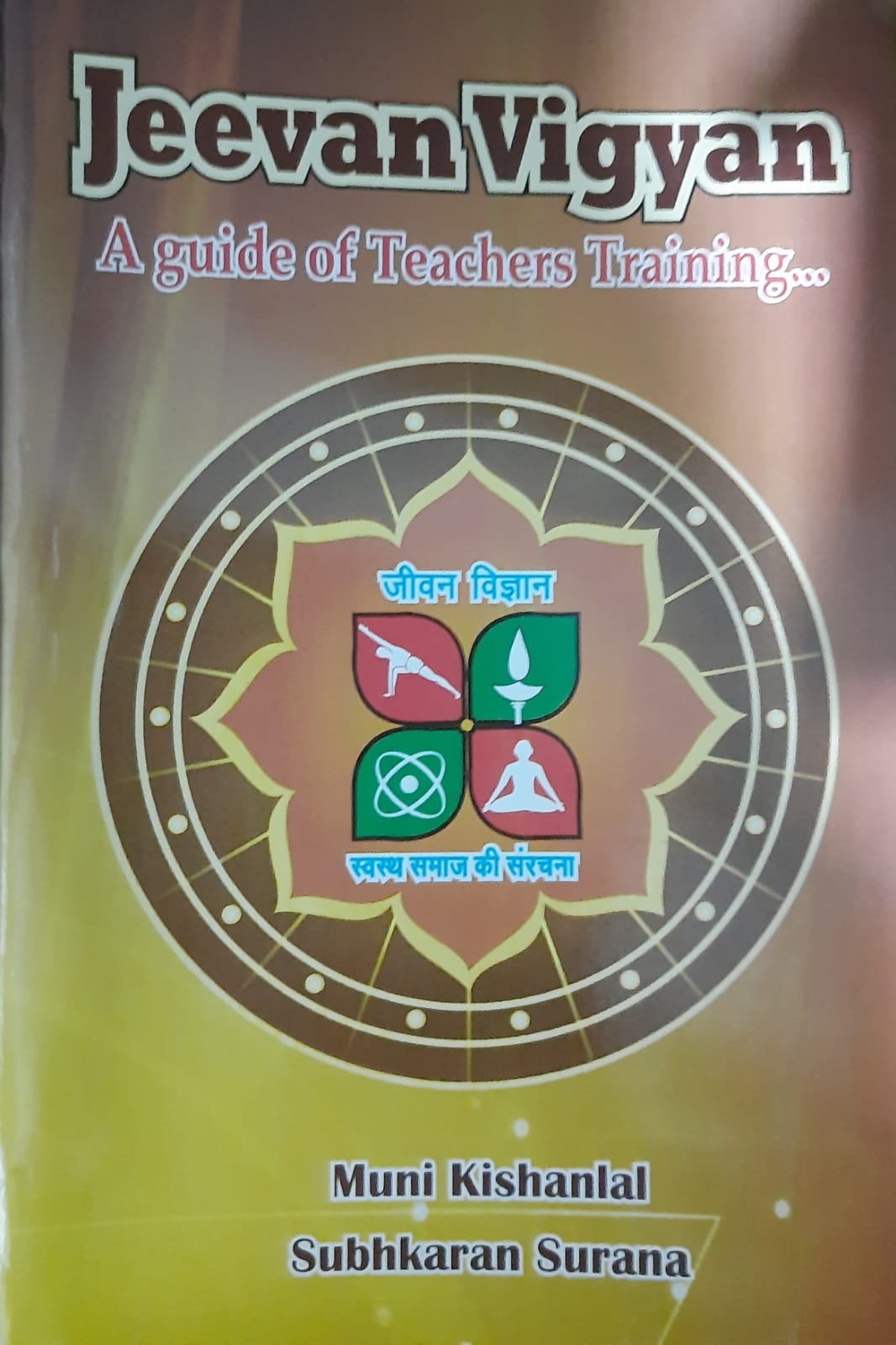Healthy mind dwells in a healthy body. A healthy body creates interest in studies. Through Asanas we can improve the health and bring about a change in the hormones secreted by ductless endocrine glands. The Asanas are chosen according to the health, memory, and improvement and balance required in the secretion of endocrine system. Perform the following Asanas in a group
1. Sampadasan
- Stand straight with both feet together.
- Keep the legs back and neck absolutely straight in parallel line.
- Keep the vision in front focusing any one point.
- Keep the palms close to the body. Normal breathing.
Benefits:
(a) Eye sight is strengthened (b) Improves mental concentration (c) Blood circulation is regularized (d) Removes tiredness.
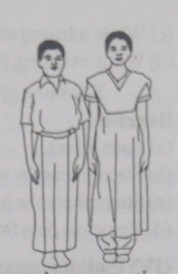
2. Tadasan
Stand straight. Join the feet. Entangling the fingers of both the hands, turn the palms and keep the hands below the navel.
- Stretch the arms above the head, while inhaling (upper arms touching the ears)
- Stand on the toes stretch the body while exhaling.
- Bring heels down while inhaling.
- Bring hands down while exhaling and relax the whole body.
Benefits:
(a) Lethargy disappears (b) Increases height (c) Removes constipation (d) Removes tension.
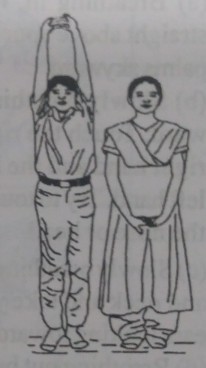
3. Konasan
Stand straight. Join the feet and keep the hands close to the body.
- Take right arm up slowly while inhaling till it touches the ear.
- While exhaling, bend waist, shoulders and neck towards the left. Arm will also bend straight towards left. Do not bend legs and knees.
- While inhaling straighten the back, shoulders and neck
- While exhaling, bring your hand down slowly
The same process is to be followed for the left arm.
Benefits:
- Face glows.
- Strengthens the waist.
- Strengthens the lungs.
- Removes pain from hands and shoulders.
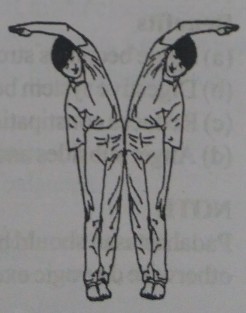
4. Padahastasan
Stand straight. Join the feet together. Keep hands close to the body.
- Breathing in, raise your hands straight above your head keeping the palms skyward.
- Slowly breathing out bend forward. Touch the right foot with the right hand and the left foot with the left hand. Try to touch the knees with the nose or head.
- Slowly breathing in raise up and straighten your waist, chest and neck and take your hands upward again keeping close to ears looking towards the sky.
- Breathing out brings your hands down. Vision to be kept in front. Do it twice.
(You can keep your palms down on the earth next to feet)
Benefits
- Spine becomes strong.
- Digestive system becomes healthy.
- Reduces constipation and overweight.
- Anger subsides and memory increases.
NOTE
Padahastasan should be performed only 40 minutes after meals, otherwise do yogic exercises of neck.
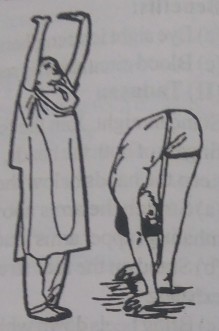
Yogic exercises of neck
Method: Standing steady in Sampadasana-
- Take the head back breathing in and look above towards the sky. Try to touch the chin to the sound box (kanthkoop) and look towards the chest while breathing out. Repeat twice.
- Turn the neck to right and look towards back while breathing out. Turn the neck to left and look towards back, while breathing out. Return to normal position while breathing in. Repeat twice.
- Slowly turn neck to right and try to touch the right ear to the right shoulder while breathing out. Return to the normal position while breathing in.
- Slowly turn the neck all round starting from right while breathing out. Once, in a clockwise direction and then, in anti-clockwise direction. Return to the normal position while breathing in. Keep the eyes softly closed otherwise there are chances to faint. (Repeat twice).
Benefits
- The muscles of the neck become supple.
- Thyroid and Parathyroid glands gets balanced.
- Spine gains flexibility.
- Balanced growth of the body takes place.
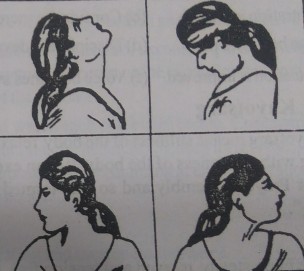
 Muni Kishan Lal
Muni Kishan Lal
 Subhkaran Surana
Subhkaran Surana
